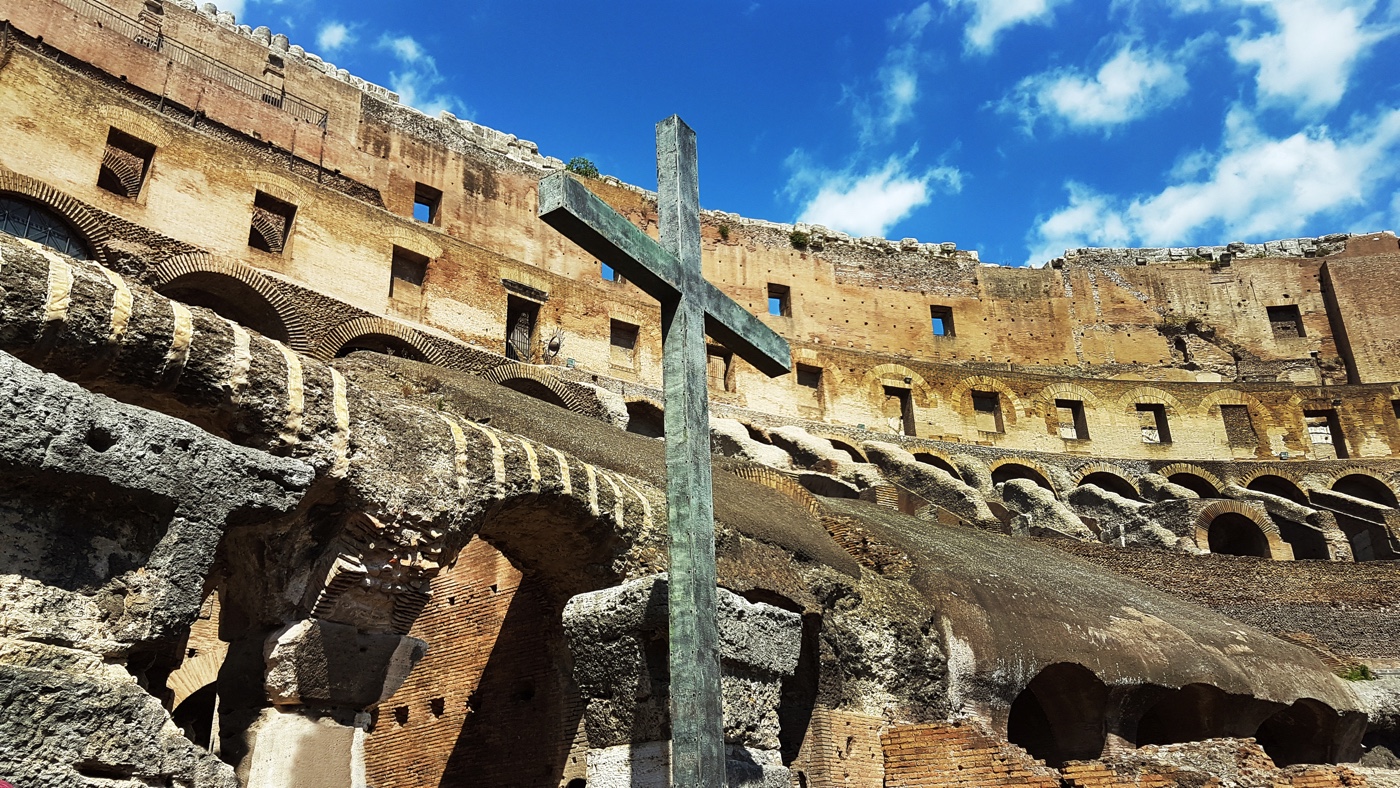How Jesus Died: Rare Evidence of Roman Crucifixion Found

The body of a man buried in northern Italy 2,000 years ago shows signs that he died after being nailed to a wooden cross, the method used for the execution of Jesus described in the Christian Bible.
Although crucifixion was a common form of capital punishment for criminals and slaves in ancient Roman times, the new finding is only the second time that direct archaeological evidence of it has been found.
A new study of the skeletal remains of the man, found near Venice in 2007, reveals a lesion and unhealed fracture on one of the heel bones that suggests his feet had been nailed to a cross. [8 Alleged Relics of Jesus of Nazareth]
The researchers from the universities of Ferrara and Florence in Italy say their findings aren't conclusive because of the poor condition of the bones and because the other heel bone is missing.
Nor have they found evidence that the body was nailed up by the wrists, the common method of Roman crucifixion described in the Bible as used in the execution of Jesus.
Ancient burial
The skeletal remains were found at Gavello, about 25 miles (40 kilometers) southwest of Venice, during archaeological excavations in preparation for the laying of a pipeline, the researchers said in their study, published online April 12 in the journal Archaeological and Anthropological Sciences.
Unusually for a Roman-era burial, the body had been buried directly in the ground, instead of being placed in a tomb, and without any burial goods, the researchers said.
Get the world’s most fascinating discoveries delivered straight to your inbox.
The researchers ran genetic and biological tests on the remains, finding that they were from a man of below-average height and slim stature who was between 30 and 34 years old when he died.
The lack of grave goods and the dead man's relatively small build suggested he may have been an underfed slave who was buried without the regular Roman funeral ceremonies — commonly part of the punishment for executed prisoners, the researchers said.
A depressed, unhealed fracture in the heel bone suggested a metal nail had been driven through it, from the inside to the outside of the right foot, either directly onto the wood of a cross or into a wooden footrest attached to a cross.
"We found a particular lesion on the right calcaneus [heel bone] passing through the entire bone," lead study author Emanuela Gualdi, a medical anthropologist at the University of Ferrara, told Live Science in an email.
Brutal punishment
In their research paper, Gualdi and her colleagues noted that the Romans had learned of crucifixion from the Carthaginians and used it as a form of capital punishment for almost a thousand years, until Emperor Constantine banned it in the fourth century A.D.
Roman crucifixions were designed to cause maximum pain for a prolonged period — victims' feet and wrists were usually nailed to a wooden cross, which would hold them upright while they suffered a slow and agonizing death, often taking several days, the researchers said.
As such, it was usually carried out only for the execution of slaves in Roman society, the researchers said; the bodies were often left on the cross to rot or to be eaten by animals, but in some cases, they were removed and buried.
Regarding the remains from Gavello, there were no signs that the man was nailed up by the wrists; instead, his arms may have been tied to the cross with rope, which was also done at the time, Gualdi said.
Crucifixions are often described in historical writings from ancient Roman times, including when Roman soldiers executed 6,000 captured slaves after the revolt led by the gladiator Spartacus in the first century B.C.
Rare evidence
Undoubtedly, the most infamous crucifixion was the execution of Jesus of Nazareth, described in the Christian Bible as taking place in Jerusalem under Roman rule at the beginning of the Christian era (between A.D. 30 and 36).
No confirmed archaeological evidence of that event has been found. But the biblical accounts of the crucifixion of Jesus are a core Christian belief, and the cross has been a symbol of Christianity throughout history. [Photos: 1st-Century House from Jesus' Hometown]
The only other time that the remains of a crucifixion victim have been found was in 1968, during an excavation of Roman-era tombs in Jerusalem. In those excavations, Greek archaeologist Vassilios Tzaferis found that a 7-inch-long (18 centimeters) nail had been driven through the heel bone of a man found in one of the tombs.
The nail was found in place within the bone, attached to a small piece of olive wood — part of the wooden cross where the man had been hung to die.
The scientists who studied the recent remains from Gavello said victims of Roman-era crucifixions were hard to identify because of the state of the ancient bones and the difficulties of making a scientific interpretation of the injuries.
Gualdi told Live Science that bones with these types of lesions were more easily fractured, difficult to preserve and hard to recognize. In addition, the metal crucifixion nails were often salvaged from a body after death.
The irregular burial of human remains at Gavello still presents many questions: "We cannot know if he was a prisoner, but the burial marginalization indicates that he probably was an individual deemed dangerous or defamed in the Roman society," Gualdi said.
Original article on Live Science.
Tom Metcalfe is a freelance journalist and regular Live Science contributor who is based in London in the United Kingdom. Tom writes mainly about science, space, archaeology, the Earth and the oceans. He has also written for the BBC, NBC News, National Geographic, Scientific American, Air & Space, and many others.


